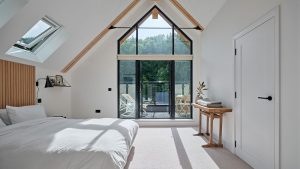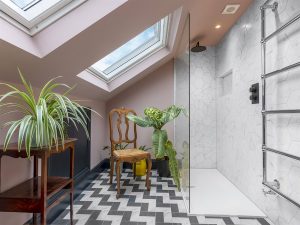Loft Conversion Plans – Unlock your home’s full potential with a loft conversion
Our Architectural Drawing Packages start from £695 + VAT
Transform Your Home with a Loft Conversion in Suffolk & Essex
Converting your loft is one of the most exciting and rewarding home improvement projects you can undertake. With up to 30% of your property’s floor space often underused, a loft conversion is the perfect way to unlock the hidden potential of your home.
Imagine creating a spacious new bedroom with an en-suite, a bright home office with stunning views, or a cosy playroom for the kids. A professionally designed loft conversion not only transforms your living space but can also increase your property’s value significantly.
At Daking Designs Ltd, we are experts in loft conversions and architectural design across Suffolk, Essex, Ipswich, and Colchester. From initial concept and design to planning applications and building regulations, our experienced team will guide you through every step of your loft conversion project.
If you’re searching for a trusted architectural design company in Suffolk or Essex to bring your loft conversion ideas to life, contact Daking Designs Ltd today – your local experts in loft conversions, home extensions, and residential design.



Is Your Loft Suitable for Conversion in Suffolk & Essex?
Before beginning a loft conversion, it’s wise to carry out a brief survey to determine whether your loft is suitable and to identify any potential obstacles. You should first assess the ceiling height to ensure there is enough space to stand comfortably. Keep in mind that the new floor will generally sit around 200mm higher than the existing ceiling joists, and roof insulation may reduce headroom by up to 150mm.
You should also consider whether the loft is large enough to create a functional and useable room. Finally, inspect the roof condition to make sure it has felt under the tiles and is fully weathertight. If the answer to these questions is yes, your loft is likely suitable for conversion, offering the chance to create a new bedroom, office, or playroom while adding significant value to your home.
Planning Permission Required?
In most cases, a loft conversion falls under Permitted Development (PD), meaning you may not need formal planning permission as long as your design meets specific regulations. However, there are situations where planning permission is required.
If your project extends beyond the limits of Permitted Development, or if your property is listed or situated in a conservation area, you will need to apply for planning permission. Planning permission is also necessary if your loft conversion involves altering the roof’s height or shape, which may be required to achieve sufficient headroom.
Simple additions such as rooflights or dormers often fall under PD, but they must not extend forward of the roof plane on the principal elevation, and they cannot exceed the highest point of the existing roof.
Even if planning permission is not required, it is advisable to submit a Certificate of Lawfulness. This provides official proof that your loft conversion complies with current guidelines, offering peace of mind and essential documentation should you decide to sell your home in the future.
Building Regulations for Loft Conversions in Colchester & Ipswich
Regardless of whether your loft conversion requires planning permission, all work must comply with building regulations. These regulations ensure your new space is safe, structurally sound, and comfortable. While specific requirements can vary depending on the type of loft conversion, several key elements apply to all projects.
Fire safety is paramount. Your loft must include fire-resistant doors and mains-powered smoke alarms to protect everyone in the home. Sound insulation is also required to reduce noise between rooms and maintain a peaceful living environment.
Floors and beams must be carefully designed, with new floor joists installed to support the additional weight of your loft room. Stairs are essential not only for access but also as a safe escape route in the event of a fire, so retractable ladders are generally not sufficient.
In some cases, new walls may be needed to support the roof if existing supports are removed during the conversion. Throughout the project, a building control surveyor will inspect the loft at various stages and issue a completion certificate once all work meets building regulations.
Loft Conversion Costs – Suffolk & Essex
The cost of a loft conversion can vary depending on several factors, including the size of your home, the age of the property, and the level of finish you choose. On average, most loft conversions start from around £30,000, making them a more cost-effective way to gain extra living space compared with building a traditional extension.
At Daking Designs Ltd, we specialise in maximising space and adding value through all types of loft conversions. We provide detailed plans and drawings for any loft conversion, typically within 7 to 10 days, with prices starting from £995 plus VAT.
Whether you’re looking to create a new bedroom, home office, or playroom, we can help turn your loft into a beautiful, functional space that meets your needs and enhances your home’s value.
Conclusion – Add Space and Value with a Loft Conversion
A carefully planned and professionally executed loft conversion is one of the most cost-effective ways to extend your home. Not only does it add significant value to your property, but it also creates extra living space tailored to your family’s needs. With the right design and expertise, a loft conversion can transform underused space into a functional, stylish, and highly desirable part of your home.
